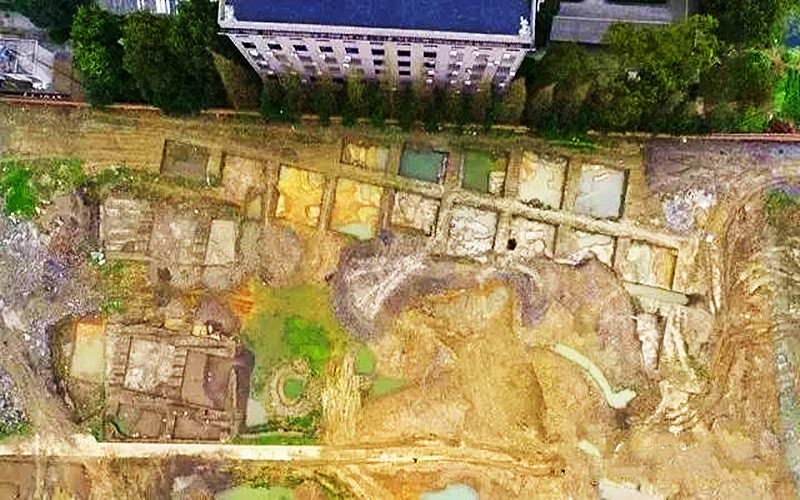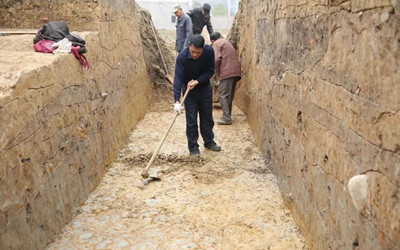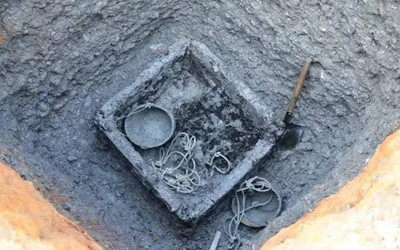The relic of ancient Baogong Town is locted in today's Baigongcheng Neighborhood Committee, Lingyang Town, Cili County, Hunan Province.

In 2015, the Hunan Provincial Institute of Cultural Relics and Archaeology salvaged about one eighth of the area of Baigong Town and discovered over 80 ancient wells, including brick wells, wooden wells, pottery wells, rattan wells, and wooden pottery wells. The number, density, and forms of its wells are rare in the country. Except for the absence of bamboo slips, the Baigong City and its remains are hundreds of times more exquisite than the Longshan Liye City, and their era is even earlier.


Be rectangular, the ancient Baigong Town has a length of 350 meters from north to south and a width of 277 meters from east to west. The rammed earth wall is 21 meters high and 6 meters wide. And the remained city moat still exist today, which is 10 meters wide and 2 meters deep. There are a large number of rope patterned tube tiles, board tiles, pots, bowls, and other pottery,etc to be discoverd in recent years.
History about the ancient Baogong Town
In 770 BC, after the fall of the Western Zhou Dynasty, the deposed prince Yijiu inherited the throne, known as King Ping of Zhou in history, and moved the capital eastward to Luoyang (now Luoyang in Henan Province), known as the Eastern Zhou Dynasty in history.
In the 15th year of King Jing of Zhou (504 BC), Bai Shen, the grandson of King Ping of Chu State, was conferred the title of Bai Gong by King Jin of Zhou Dynasty ( Gong was a title conferred by the King of Zhou of the Central Dynasty during the Zhou Dynasty). At same time, Bai County was established in the middle -upper reach of the Lishui River, And Bai Sheng was orderd as the govenor of the Bai County.
In the 31st year of King Jing of the Zhou Dynasty (489 BC), Bai Sheng sent his retainer Shi Qi to build the city on the bank of ling River,a branch of Lishui River. Therefore, it was named Baigong Town, capital of Bai County in the East Zhou Dynasty.
